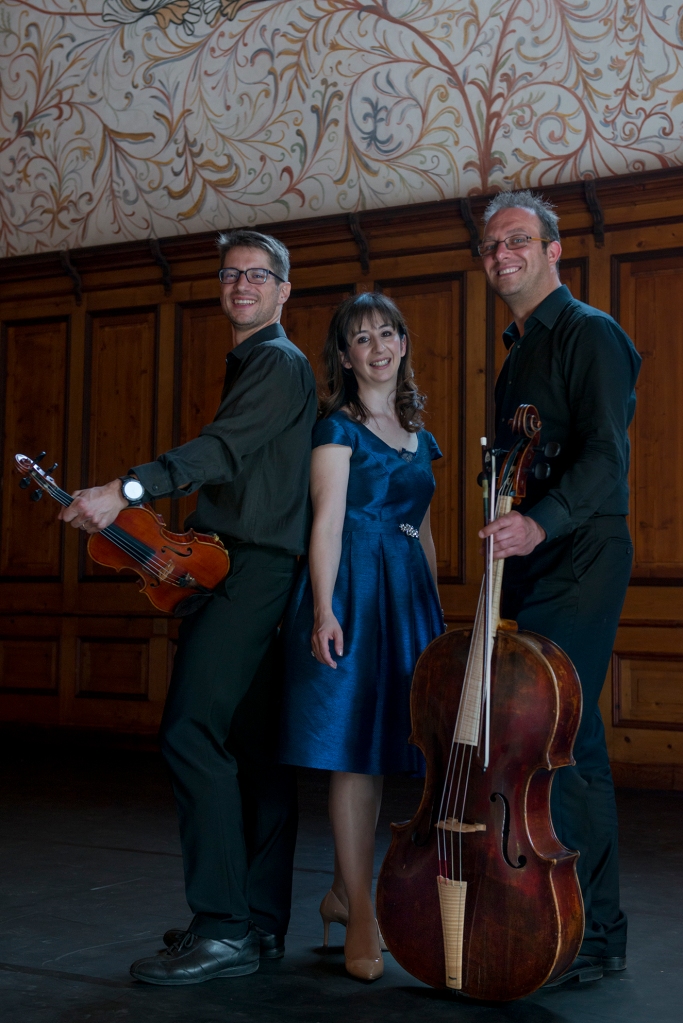by Sabrina Borzaga
Sabrina developed the “Entolé Danza a 432 Hertz” method, with the aim of giving dance students further opportunities to connect with music through string instruments such as violin and cello. In the second part of her blog she writes about the benefits string instruments can bring in the dance studio. For Part One, see here.
During one’s musical career, it sometimes happens that one needs to choose whether to embrace a project or not. Many aspects factor in the decision. Perhaps the most important question we ask ourselves is – why? As a musician I am used to accompany dance shows; through the Entolé project I wanted to understand in more depth the role of music in the ballet lesson. Perhaps what has stricken me the most has been the potential that dance and music have to be a single expressive movement.
Ivo Crepaldi, violinist (translation: Tamara Tempera)
Violin and Cello
The muscles in our body are bundles of muscular fibres, bundles of strings…
Starting from this important premise, from a functional point of view it is natural to link to a body made of bundles of “strings” an instrument such as violin and cello, whose bows “dance” on the strings. The sound of violin and cello also activates the lymphatic system, and this is followed by a smooth and harmonious quality of movement.
From the analysis of the different sections of a ballet class it is possible to notice how in the Adagios and port de bras the movements of legs and arms, when crossed by the vibration of the two instruments, resonate spontaneously in agility and spontaneity. In the pirouettes, the succession of bow strokes up and down the violin helps trigger the centrifugal force, and the frequency of the cello helps perceive the centripetal force which ensures control and stability during the rotation. The execution of jumps becomes more energetic and elevation is assisted by the timbre of the violin, whereas the cello facilitates control during the landing. In pointe work the 432 Hz frequency is fundamental to avoid raising the centre of gravity, which is caused by frequencies that create instability at unconscious level. As in pirouettes, the frequency of the violin comes to aid at the moment of lifting on the metatarsal, and the lowest register of the cello stabilises the ankle.
Sense of rhythm
The accompaniment with violin and cello is beneficial not just for interpretation but also for sense of rhythm and musicality in general.
When a class is accompanied at the piano, the students do not see how the pianist’s hands move, whereas when they are accompanied by violin and cello the movement of the bows is well visible. From this derives an awareness of rhythm but also of the dynamic of the music, which becomes easier to understand. For what the differentiation of sound is concerned, some find it extremely difficult to distinguish melody from rhythm in a piece for piano. In an accompaniment with violin and cello sounds are more easily distinguishable. Students tune in immediately to the melody (or line) of the violin and rhythm (or accompaniment) of the cello.
Another common problem is the students’ poor sense of phrasing. In this case, the baroque cello can be of help, because it has a more precise attack with the use of gut strings and a greater resonance of harmonic. The resulting sound is cleaner and more marked, and helps dancers understand musically the foundations of phrasing.
Before you dance, listen!
In the moments before dancing or executing an exercise, the most important action a student or dancer carries on is… listening!
A class accompanied with violin and cello requires a section dedicated to listening and rhythm to develop the students’ attention, which has immediate beneficial consequences with regards to musicality, sense of rhythm, phrasing and interpretation. There are great benefits from an attentive listening that develops in a coherent movement between the movement of the bows and the movement of legs and arms. The students’ gestures become more graceful or intense, depending on the musical style. The vibration accompanies the combination of steps and crosses the succession between each movement, strengthening the emphasis in the improvisation and the precision of the movements themselves. The execution has great quality even in the youngest students.

The experience of feeling the power of the vibration is useful to explain the resonance to students. They are asked to sit in a circle, then the cello player makes the students feel the vibration of the instrument along their backs; the violinist does the same afterwards.
It is not possible to explain what one feels, it can only be experienced directly. To feel one’s own body be passed through by the sound and the vibration is touching. The young people open their eyes, some are moved and cannot believe the power of the vibration and what strikes them the most is the law of the resonance. Our “strings” have vibrated following the vibrations of the instruments; we are not asked to do anything – our body responds perfectly without thinking, in the same way it makes us breathe and our heart beat…
